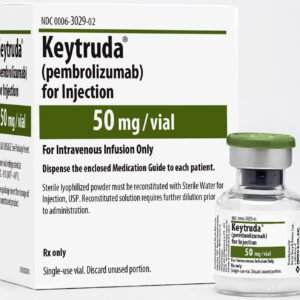Breast cancer
is a type of cancer that develops in the cells of the breast, usually starting in the milk ducts or lobules. The growth is often due to mutations in the DNA of breast cells, leading to uncontrolled cell division and tumor formation. It can affect both men and women, although it is far more common in women.
Types of BreastCancer:
- Ductal Carcinoma In Situ (DCIS): A non-invasive cancer where abnormal cells are found in the lining of a breast duct but have not spread outside the duct. Cancer of the Breast
- Invasive Ductal Carcinoma (IDC): The most common type, where cancer cells have spread beyond the ducts into other parts of the breast tissue.
- Invasive Lobular Carcinoma (ILC): Cancer that starts in the lobules (glands that produce milk) and spreads to surrounding breast tissue.
- Triple-Negative Breast-Cancer (TNBC): A more aggressive form that lacks three common receptors known to fuel most breast cancers (estrogen, progesterone, and HER2). Cancer of the Breast
- HER2-Positive Breast-Can..: Characterized by an overexpression of the HER2 gene, making it more aggressive but responsive to targeted therapies.
- Inflammatory Breast-Can..: A rare, fast-growing type of breast cancer that causes redness and swelling in the breast.
Risk Factors:
- Gender: Women are at higher risk.
- Age: The risk increases as you get older.
- Genetics: Mutations in genes like BRCA1 and BRCA2 increase susceptibility.
- Family history: A family history of breast or ovarian cancer can raise the risk.
- Lifestyle factors: Obesity, lack of exercise, and alcohol consumption may increase risk.
Symptoms:
- A lump or thickening in the breast or underarm.
- Change in breast size, shape, or appearance.
- Nipple discharge, especially if it’s bloody.
- Skin dimpling or puckering.
- Redness or flaky skin on the breast.
- Breast pain or tenderness.
Diagnosis:
- Mammograms: X-rays of the breast to detect abnormalities.
- Ultrasound: To further evaluate lumps.
- Biopsy: Removal of breast tissue for microscopic examination.
- MRI: Detailed imaging for a clearer view of the breast.
Treatment:
- Surgery: Lumpectomy or mastectomy to remove the tumor.
- Radiation therapy: To target and kill cancer cells in the breast area.
- Chemotherapy: Systemic treatment to kill cancer cells throughout the body.
- Hormone therapy: For hormone receptor-positive breast cancers to block estrogen or progesterone.
- Targeted therapy: For cancers like HER2-positive breast-canc.. to target specific cancer cell receptors.
Prognosis:
Early-stage breast cancer often has a good prognosis, with high survival rates, especially when treated promptly. Advanced stages (stages III and IV) require more aggressive treatment, and the prognosis varies depending on factors like cancer type, stage, and response to treatment.
Regular screening and early detection are critical for improving outcomes.
Sale!
Breast Cancer
£2,700.00 – £5,500.00
Sale!
Breast Cancer
£5,700.00 – £12,000.00
Sale!
Breast Cancer
£2,700.00 – £6,300.00



